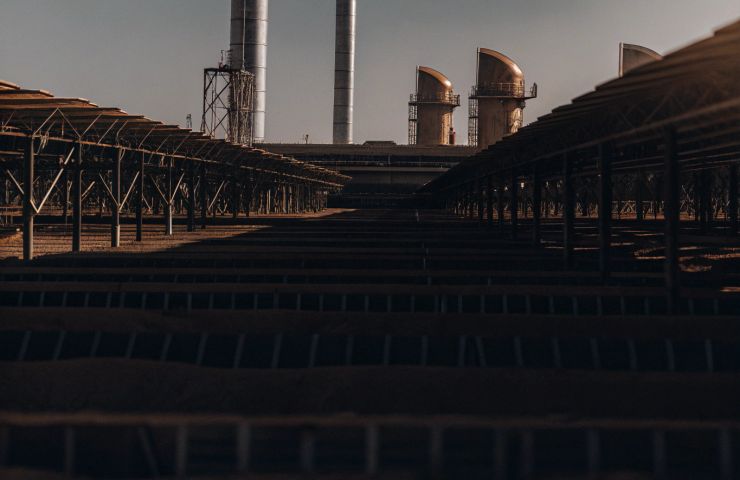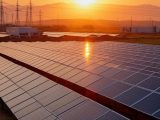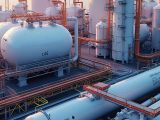
Yanbu’s Green Hydrogen Hub Set to Become World’s Largest by 2030
July 29, 2025Yanbu, a bustling industrial city on Saudi Arabia’s Red Sea coast, is making bold moves—but not in oil this time. It’s gearing up to become home to what could be the world’s biggest facility for green hydrogen production and green ammonia export. Yes, you read that right—Saudi Arabia is putting serious weight behind clean energy, and things are moving fast.
Yanbu’s Big Leap Toward Clean Energy
Once known mainly for petrochemicals, Yanbu is carving out a new identity as a pioneer in renewables. It’s perfectly placed—with easy access to sunlight, strong Red Sea winds, seawater for desalination, and a deep-water port ready to ship clean fuels around the globe. All the ingredients are there to make this city a key player in the future of energy.
In July 2025, ACWA Power kicked things off with the launch of the Yanbu Hydrogen Hub. The goal? To build the world’s largest integrated green hydrogen facility by the end of the decade—set to even outshine the nearby Neom project, which is already a powerhouse in its own right at 2.2 GW.
What Makes This Hub Special?
This project isn’t just about building big—it’s about building smart. The hub will bring together everything needed to create and export clean fuel on a massive scale:
- Solar and wind farms cranking out reliable renewable energy
- Cutting-edge electrolysis units to split water into hydrogen and oxygen
- Desalination facilities turning seawater into clean water for electrolysis
- Ammonia synthesis systems that convert hydrogen into a shippable form
- A tailor-made export terminal built to get the fuel overseas efficiently
It’s a plug-and-play clean energy ecosystem—built from the ground up with sustainability in mind.
Big Names, Bold Partnerships
ACWA Power is leading the charge, but they’re not going it alone. Engineering heavyweights like Spain’s Técnicas Reunidas and China’s Sinopec are laying the groundwork—bringing serious design and construction expertise to the table.
On a global level, ACWA is locking arms with energy giants across Europe. We’re talking about deals with TotalEnergies (France), Eni and Edison S.p.A. (Italy), and Germany’s EnBW. This creates a new supply route from Saudi Arabia straight into major European energy markets. Dutch firm Zhero Europe B.V. is also helping chart the best way to move that fuel across borders.
And it doesn’t stop there—companies like Air Liquide and Air Products Qudra are lined up to handle everything from industrial gases to onsite logistics. What’s happening in Yanbu isn’t just a one-off project—it’s the blueprint for a whole new kind of energy infrastructure.
The Tech That Brings It All Together
At its heart, the Yanbu hydrogen hub is powered by electrolytic hydrogen production. Solar and wind energy feed massive electrolysis machines that split water into hydrogen. That hydrogen is then combined with nitrogen—pulled straight from the air—to make green ammonia. Why? Because ammonia is way easier to transport and can be converted back into hydrogen or burned directly as a low-carbon fuel.
Getting water in a desert environment is no small feat. That’s where desalination comes in, ensuring a steady, sustainable supply of fresh water pulled right from the sea. All of this runs on renewables, meaning the plant’s operations are close to zero-emissions. That’s not just clean energy—it’s smart, scalable energy.
Driving Saudi Arabia Vision 2030—and Beyond
This isn’t just an energy project—it’s a signal of where Saudi Arabia is headed. The Yanbu hydrogen hub is a huge step in the country’s push to diversify its economy and lean into clean technology, as outlined in Saudi Arabia Vision 2030.
Europe, in particular, is searching for new, reliable sources of clean fuel—especially ones that aren’t linked to global instability. That’s where Saudi Arabia sees its chance. By investing in renewable energy infrastructure, it’s building more than just plants and pipelines—it’s opening economic and geopolitical doors in every direction.
Big Rewards, Real Challenges
The potential payoff from all this is enormous:
- Lower global emissions: Green hydrogen could start replacing the fossil-based kind that currently makes up 95% of global hydrogen use.
- New careers: From clean energy tech to logistics, the project is creating a wave of high-value, future-proof jobs.
- Energy resilience: For countries looking to meet climate targets without sacrificing reliability, this hub is a game-changer.
But of course, no mega-project comes without its hurdles. Water availability is tight in this part of the world, and leaning too heavily on hydrogen exports means global demand has to stay strong. Plus, there’s the need for thoughtful transitions—helping current workers move into the green economy and making sure the benefits are shared across communities.
What the Future Could Look Like
If the Yanbu hydrogen hub delivers even close to what’s planned, it could shake up the entire global energy scene. It’s a real-world example of how renewable energy infrastructure can jump from concept to country-sized scale—quickly, and with real impact.
With countries from Europe to Asia scrambling to find clean alternatives, Yanbu might just become one of the main bridges that connects future energy supply chains. Because this isn’t just about hitting deadlines in 2030—it’s about leading the way into whatever comes next.



 With over 15 years of reporting hydrogen news, we are your premier source for the latest updates and insights in hydrogen and renewable energy.
With over 15 years of reporting hydrogen news, we are your premier source for the latest updates and insights in hydrogen and renewable energy.